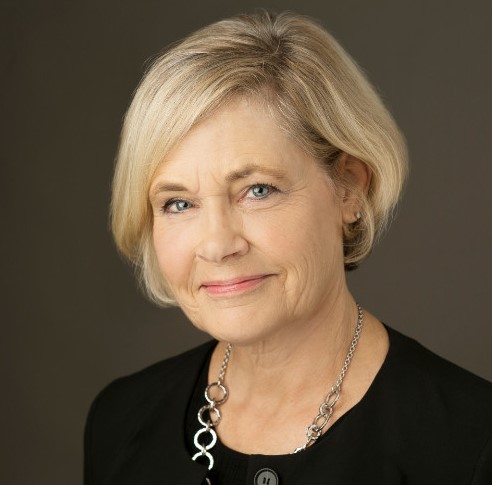Brenda Chilman: A positive patient experience starts with the revenue cycle

Bookended by her first job at the CPA firm Arthur Andersen and her current job, 30+ years later, just down the road at SSM Health, Brenda Chilman has had a strong and far-flung career in healthcare finance. Her journey — which has taken her from St. Louis to Denver to Baltimore and, full circle, back to St. Louis — has included stints as a controller and, at various times, as a vice president. And her areas of oversight in the vice president role have included physician services, provider networks and the revenue cycle.
She now serves as system vice president and chief revenue officer (CRO) for SSM Health, overseeing all revenue cycle operations for the 23-hospital system.
Throughout her journey, she has seen extensive change in the healthcare industry.
“It has been quite a ride,” she said. “So much change has taken place. But, of course, it is important always to advance with the ever-evolving healthcare industry to maintain our ability to effectively provide access to the patients we serve.”
Making a difference from finance to the revenue cycle
An HFMA member since 1989 (35-years), Chilman considers her career in healthcare to be a gift — an opportunity to be a part of mission-driven healthcare organizations and to work with tremendous leaders, mentors and team members. And she continues to feel this way just as strongly — if not more so — in her current role leading healthcare revenue cycle operations.
The revenue cycle is a dynamic operational function that serves a critical role in a healthcare organization, Chilman said.
Among the elements of the revenue cycle operation that are most critical to achieving efficient and effective outcomes, she noted, are patient access (registration), health information management (medical records), billing and collections and patient experience.
“As many of my colleagues will attest, the effectiveness of patient access and preservice functions is essential to the ultimate experience of the patient,” Chilman said. “By delivering efficient, effective patient-facing services, we increase the timeliness of insurance and patient payment — and improve the overall patient experience.”
Promoting Access to care and cost effectiveness
With the goal of enhancing financial preservice, Chilman is heading up an SSM Health initiative to improve and simplify the entry of patients to care, through an access strategy that will provide SSM Health’s patients with exemplary preservice financial clearance for healthcare services.
“This is a developing organizational strategy at SSM Health, with staging expected in the coming two years,” she said.
The initiative’s scope extends to all 23 hospitals, and it encompasses physician offices and outlying clinics. It also seeks to optimize both existing technology and the operational structure needed to serve patients effectively and to lower the cost of care through improved processes, Chilman said.
The CFO-CRO relationship
When asked why she chose to pivot from her healthcare finance leadership roles to a role focused on the revenue cycle, Chilman explained: “The CRO role gives me a much greater chance to drive operational change. I have always seen myself as an operational executive. I enjoy getting involved in the intense elements of the revenue cycle — including strategy, financial return and also, importantly, patient experience.”
Chilman stressed that, in this role, it is imperative to keep the CFO fully informed on what’s happening in the revenue cycle metrics and how they match with the organization’s set goals.
“When making operational changes, I need to be sure that the CFO is aware so that we can champion change organizationally,” she said. “A strong working relationship is essential to effect change.”
5 guiding principles for healthcare finance leaders from Brenda Chilman
Brenda Chilman provided the following points of advice for all healthcare leaders.
1 Know your why. Aligning the organizations’ why among all stakeholders of a change initiative brings clarity about what is needed to accomplish an objective and spurs the required action. Great progress can be made when all members of the team are encouraged to pull together in the same direction to create a win.
2 Learn the best ways to navigate change. Navigating change in a large, complex organization like SSM Health requires strong collaboration and shared vision over the long term. Forming relationships matters, both within the organization and with external partners. There’s no need to always win every point. Building trust and following through on commitments are paramount to forming the relationships necessary for navigating change.
3 Know your role. Everyone on a team should know their primary role. As the senior executive for the overall revenue cycle, for example, my role is to support the team so that they can achieve top performance. That means setting overall direction, ensuring necessary resourcing and clearing barriers. It is an amazing privilege to be a part of a supported team that produces extraordinary results.
4 Create a culture of accountability. Leaders should ensure teams are given achievable yet stretch goals and are held accountable for the outcomes. Most accountability goals are metrically derived, and this is doubly true for the revenue cycle. So it is important to determine what metrics will be measured, the current performance for each metric and what outcomes are to be achieved. Also, for any metric, it is essential to have a strategic road map and timeline for improvement goals.
5 Be willing to be a decision-maker. Leaders should never be afraid to make decisions. Making the best decision with the information available at the time — even if it’s not complete — is an art, and a critical component of effective leadership. Some may disagree, but it is important to be willing to be wrong. Often, the only way to know if a decision is right or wrong is to make one, and if it does not meet the desired outcomes, then … pivot.





